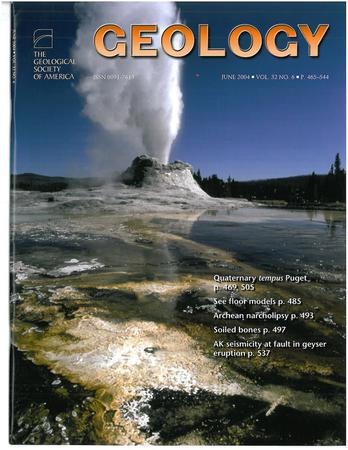Prolonged and gradual recovery of metazoan-algal reefs following the end-Permian mass extinction
IF 4.8
1区 地球科学
Q1 GEOLOGY
引用次数: 0
Abstract
The tempo of biotic recovery following extinction reflects the time scales of evolutionary processes and the long-term consequences of degraded ecosystems, but recovery patterns are poorly resolved. In this study, we investigated the tempo of biotic recovery by evaluating metazoan-algal reef assembly following the end-Permian mass extinction. We combined satellite imagery analysis, field mapping, biostratigraphy, and quantitative petrography to assess recovery in the oldest-known and most stratigraphically extensive Lower to Middle Triassic platform-margin reef. The reef occurs in upper Spathian (upper Lower Triassic) to upper Anisian (lower Middle Triassic) strata of the Great Bank of Guizhou (GBG) isolated carbonate platform in south China. Previous work suggests that metazoan-algal reefs were absent for 8−10 m.y. following extinction but were biologically diverse from their Pelsonian (middle Anisian) initiation. This pattern implies that reefs can reassemble rapidly (<< 1 m.y.) when environmental conditions are favorable. In contrast, our analyses indicate that calcareous sponges, calcareous algae, and early scleractinian corals occurred progressively in the GBG reef and that biotic recovery metrics increased gradually. Unlike nonreef ecosystems, biodiverse metazoan-algal reefs were delayed until the late Pelsonian or early Illyrian, postdating broader marine ecosystem recovery and isotopic evidence for carbon-cycle stabilization by 2−4 m.y. Our findings suggest that reef and nonreef ecosystems differ in their recovery pattern and tempo. Reef recovery from severe environmental perturbation can require several million years, even after hospitable conditions return, highlighting the importance of modern reef conservation.二叠纪末大灭绝后后生动物藻礁的长期和逐步恢复
灭绝后生物恢复的速度反映了进化过程的时间尺度和生态系统退化的长期后果,但恢复模式解决得很差。在这项研究中,我们通过评估二叠纪末大灭绝后的后生动物-藻礁组合,研究了生物恢复的速度。我们结合卫星图像分析、野外测绘、生物地层学和定量岩石学,评估已知最古老、地层最广泛的下三叠统至中三叠统平台边缘礁的回收率。该礁产于中国南部贵州大银行(GBG)孤立碳酸盐岩平台的上斯帕第阶(上下三叠统)至上阿尼斯阶(下中三叠世)地层中。先前的研究表明,后生动物藻类礁在灭绝后的8-10个月内都不存在,但从其Pelsonian(中Anisian)期开始就具有生物多样性。这种模式意味着,当环境条件有利时,珊瑚礁可以迅速重组(<<1 m.y.)。相反,我们的分析表明,钙质海绵、钙质藻类和早期巩膜珊瑚在GBG礁中逐渐发生,生物恢复指标逐渐增加。与非参考生态系统不同,生物多样性后生动物藻礁被推迟到晚Pelsonian或早Illyrian,使更广泛的海洋生态系统恢复和碳循环稳定的同位素证据推迟了2-4 m.y。我们的发现表明,珊瑚礁和非参考生态系统的恢复模式和速度不同。从严重的环境扰动中恢复珊瑚礁可能需要数百万年的时间,即使在适宜的条件恢复后也是如此,这突出了现代珊瑚礁保护的重要性。
本文章由计算机程序翻译,如有差异,请以英文原文为准。
求助全文
约1分钟内获得全文
求助全文
来源期刊

Geology
地学-地质学
CiteScore
10.00
自引率
3.40%
发文量
228
审稿时长
6.2 months
期刊介绍:
Published since 1973, Geology features rapid publication of about 23 refereed short (four-page) papers each month. Articles cover all earth-science disciplines and include new investigations and provocative topics. Professional geologists and university-level students in the earth sciences use this widely read journal to keep up with scientific research trends. The online forum section facilitates author-reader dialog. Includes color and occasional large-format illustrations on oversized loose inserts.
 求助内容:
求助内容: 应助结果提醒方式:
应助结果提醒方式:


